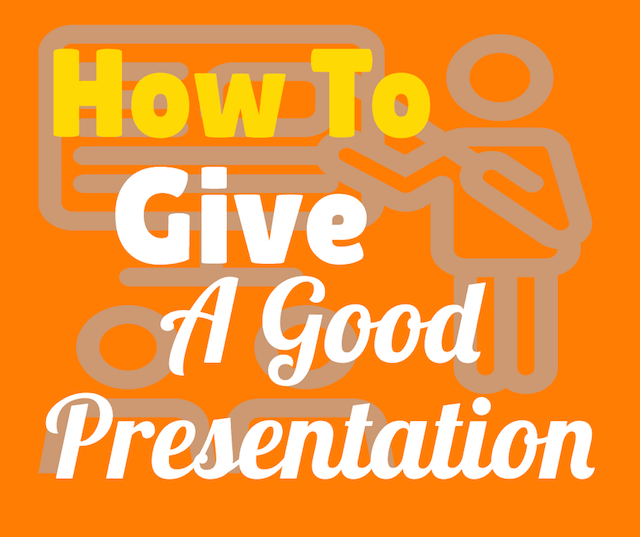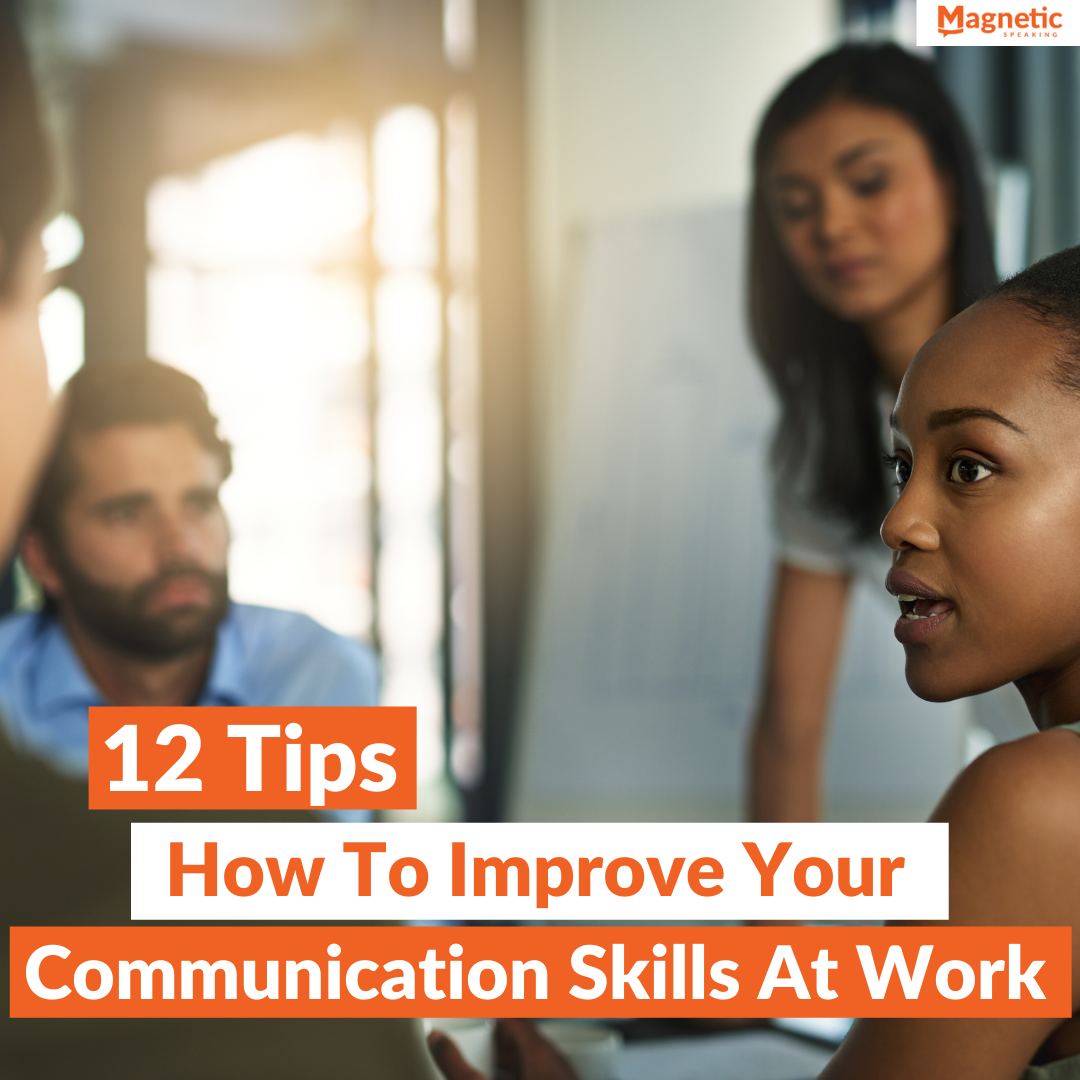When people seek tips on good presentation skills in Google, they typically type in the following question: How to give a good presentation?
Sorry to tell you but that is the wrong question to ask.
The better question is: How to give an effective presentation?
Because in a business setting, effective beats good any day!
So what is the difference between a good presentation and an effective one?
Good presentation VS. an effective presentation
Changing the adjectives from “good” to “effective” in the question turns it from a subjective question to an objective one. Think about it: What’s “good” for you might not be “good” for me and vice-versa. However, what’s effective can be measured and documented.
Definition
ef·fec·tive
əˈfektiv/
1.successful in producing a desired or intended result.
When you present in a business setting, you do not just flap your lips for no reason. You always have an objective, and this objective should always be measurable. Otherwise, you will never know whether the presentation was successful or not.
Also… A good presentation is not necessarily effective, but an effective presentation is always good.
Here are 3 of ways to make sure you give an effective and good presentation.
Step #1: Be clear on who you are presenting to
A presentation to everyone is a presentation for no one. If you try to build a presentation for “all” your audience members, then your message will be diluted, and your arguments will be stretched out in multiple directions.
That is ineffective.
Imagine that you are trying to write an important email, and every 10 seconds someone from your company stops by to ask you a question. Do you think you will be able to write a good email?
The answer is, “No.”
Same thing happens if you try to create a presentation without clarity on the intended audience.
You will be thinking about an argument to convince Sam, and then Sally pops into your mind with a different need than Sam, and then you switch your thinking to Sally, and 10 seconds later Paul shows up and so on.
By the time you are done with the presentation and have all your slides ready, you will have some thought slides in your presentation to satisfy Sam, some slides to satisfy Sally, some conclusion slides to satisfy Paul and etcetera.
There will be no unifying message or theme. It is why some presenters ramble on with no point to make. Rambling is a symptom of a presentation with no anchor point.
If you want your presentation to be effective, you have to pick one person or a maximum of two to use as the anchor point(s). This will help you stay focused on a direct and cohesive message.
Okay, you are convinced. Now, how do you pick your anchor-person?

There are many choices for each presentation, but you have to be strategic with your choice. I usually pick by asking myself these three questions:
Who is the decision-maker?
Who is the most important person in the room?
Who would benefit the most out of my presentation?
Then I make my decision. If you can’t think of a real person, then create a Persona. A persona is a symbolic person you chose. Usually, I pick a name and a title for this Persona. Some examples: Mark an engineer, Molly a doctor, and Mary the CEO.
I like to come up with a real person vs. persona. However, a persona is better than nothing.
Remember the first step to creating an effective presentation is to create the presentation as if it will be delivered to only one person. This individual is the anchor point for all your thoughts, arguments, data, and slides.
[easy-tweet tweet=”A presentation to everyone is a presentation for no one. @magneticspeak #toastmasters #pubicspeaking”]
Step #2: Be clear on the outcome
Why do we set outcomes in business? Because outcomes are how we measure success.
Without setting goals and outcomes, we would build hobbies, not businesses. A presentation in a business setting is a tool to educate, influence and move a business agenda. Therefore it must have outcomes and goals attached to it.
Have you ever asked your manager or a trusted colleagues after a presentation on how you did? That’s good. There is nothing wrong with asking.
However, if you set clear outcomes for your presentations, you will not feel the need to ask. Because now, you would know how successful a presentation is by measuring the results.
Here is how you set an outcome for your presentation:
- Think of the anchor person from step #1
- As you have them in your attention fill in the following three blanks:
- At the end of my presentation I want the anchor person to Do_______, think_________, feel_____________
Notice how the anchorperson comes in the picture. Without them, there will be no set outcome for the presentation. If you have two people as your anchor people, then you need to do this process twice (That’s why I chose only one anchor person).
Do: At the end of the presentation what do you want your anchor person to do:____________
In business, there is always a ball to be pushed forward. When you present, you have to consider what you want the anchor person to do to push the ball forward. Do you want them to sign off on a project, approve a plan, give you support, buy something, or give you resources? Or maybe continue giving you support and resources? What is it that you want them to do?
You have to be clear on what you want the anchor person to do. Otherwise, there is no tangible business outcome to the presentation, and I believe that’s a waste of your time.
Think: At the end of the presentation what do you want your anchor person to think:____________
(Just as a suggestion, book mark this page so that you can come back to it every time you have a presentation, that way you make sure your presentations will always be effective)
Once you know what you want your anchor person to do, then you can move on to the thinking part. Use simple language and write down a couple of thoughts you want your anchor person to leave with upon hearing your presentation.
It’s important to keep this very simple. If you are writing paragraphs, then you are not doing this the right way. Keep it simple.
Use Nike as an example: What do you think Nike wants you to think when you see one of their products for sale? “Just do it!” That’s why they hammer this in every single time they present using commercials.
When you see a pair of kicks you like and wonder whether to buy them or not, what do you think is playing in your mind? “Just do it.”
Following the footsteps of Nike, it’s your turn. What do you want your anchor person to think at the end of your presentation?
Write it as they would say it. For example instead of writing “I want the audience to believe we proposed an excellent approach.” Write it this way: “Wow, what a great strategy!”
Notice that you write it as if your anchor person is thinking it.
Feel: At the end of the presentation what do you want your anchor person to feel:____________
There is a big difference between feel and think. Feel is an emotion like love, hate, sadness, fear, happiness, inspiration, comfort, etc.
Sometimes you want people to feel one or two emotions in your presentations. Choose the feelings that will help guide your anchor person to do what you want them to do.
Once you have this, you will have a solid outcome to measure your success.
When I do sales presentations I usually have the following for my do, think, feel parts:
I want the anchor person to purchase at least three full day public speaking boot camps; I want them to think “wow magnetic speaking is different than anything I’ve tried before,” and I want them to feel hopeful and optimistic about improving their public speaking skills and confidence.
See it’s simple.
Step #3: Be clear about your message

Einstein once said, “If you can’t explain it simply, you don’t understand it well enough.” Before you create your whole presentation, sit down and think about your message.
Come up with a straightforward and concise way of saying it out loud. If you can’t do it, then I assure you that your whole presentation will not be understandable to your audience. You have to be able to tell your story in a nutshell. Here are examples of a clear message or story in a nutshell:
- Improving your communication skills will help you succeed in your career.
- Hiring more writers for our editorial team will help us enhance our quality and attract more readers to our corporate blog.
- Focusing on millennials will help us expand our market reach.
- We need to kill project x because it’s a waste of resources better used for project y.
Notice that each of the nutshell messages above can be expanded into a big presentation that has background, evidence, position and call to action. But you can’t go that far if you can’t even state your position in a simple and clear statement.
Conclusion
If you want to learn how to give good presentations, then you need to learn how to give effective presentations. Effective presentations are the key to your success in a business setting because they are outcome oriented and measurable goals. If you focus on creating good presentations only, then you will not necessarily create effective ones. However, if you concentrate on creating compelling presentations, then you will always give good and even excellent ones.
Discussion:
- What do you think?
- Do you agree that it’s better to focus on effective presentations vs. good presentations?
- Do you think business presentations should always have an outcome?
- Would love to hear your thoughts in the comments below.






